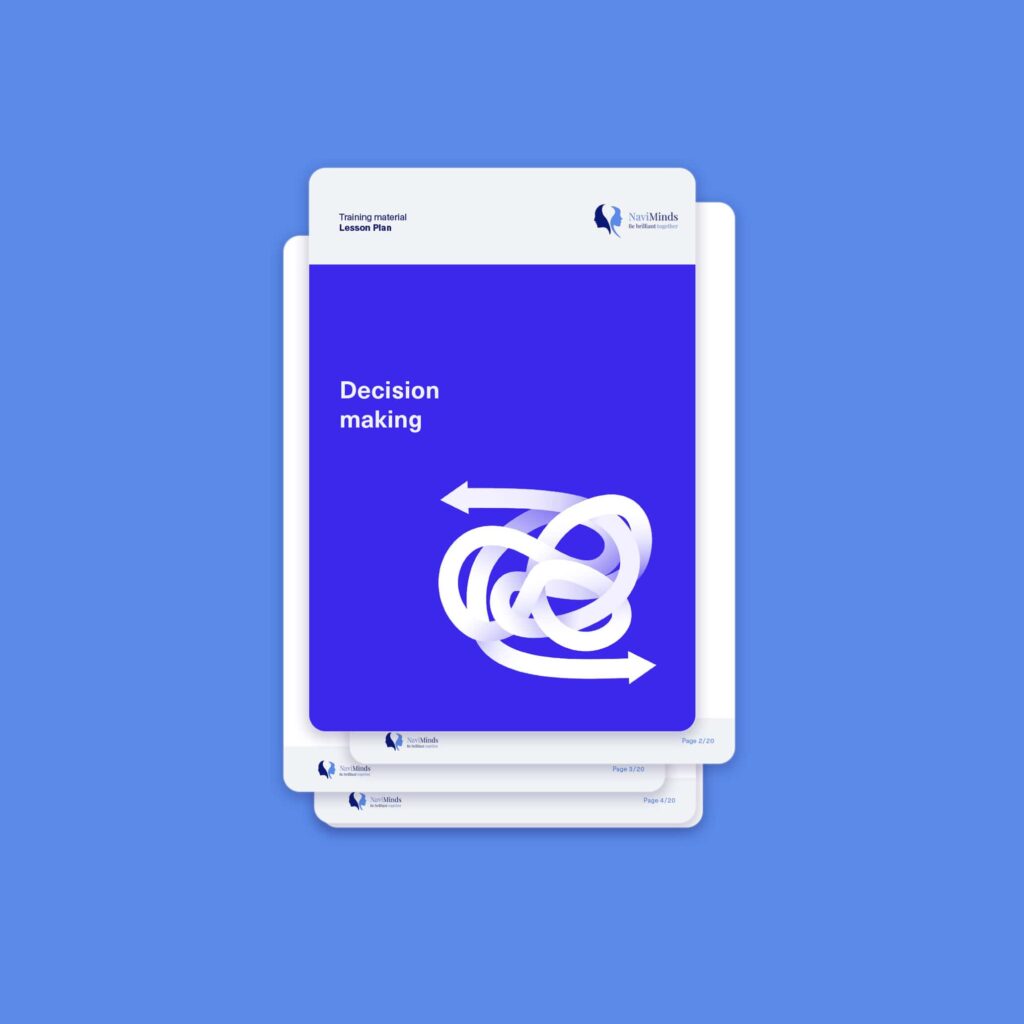
What is the ambiguity effect?
Remember when you were scrolling through Netflix to pick a movie for Friday night; you can choose to see the new movie with Emma Stones; supposedly, it should be excellent. Then again, what if it’s not for you? That would mean you wasted 2 hours. So, you rewatch Seinfeld for the millionth time because you know that works.
Like your Netflix shortcut, our human brain likes to take shortcuts, too. Our brains skip the hard part of making estimates or guesses about the ambiguous choice and go straight for the more familiar option.
In this article, we’ll investigate the effect, why it occurs, and methods you can use to counteract it.
Discover all our aviation-related topics.
The ambiguity effect is a cognitive bias that refers to our tendency to avoid options we perceive as ambiguous or lacking information. We generally dislike uncertainty and, thus, tend to choose options where the probability of achieving a favourable outcome is known.

An example of the ambiguity effect in aviation is when a pilot chooses to continue an approach in uncertain weather instead of diverting to an alternate airport. The alternate airport may have better weather but other unknown issues.
When buying a new home, most acquire financing by securing a mortgage from a bank. During this process, homebuyers must choose between a conventional loan with a fixed interest rate or an adjustable-rate mortgage, where the interest rate varies based on the market.
People usually opt for fixed-rate loans, even though historically, adjustable-rate mortgages have proven to be more economical in the long run. So, why do individuals choose the more expensive option?
Many homebuyers prefer the certainty of having a fixed monthly payment, even if it is more costly. To them, this is “safer” than the unpredictability of payments that may fluctuate, even if that means their payments may decrease and save them money over the life of the loan. Because their payments could also increase, right?
Another example could be when you’re deciding on a new hair serum. With an endless supply of manufacturers promising the thickest, smoothest, bounciest hair, it’s challenging to know which serum to buy.
All odds, in this case, will be that whilst there are some new fancy-looking hair serums out there, you don’t really know the brand, whilst L’Oréal and Kérastase, you know. So, most likely, you’ll buy your new hair serum from one of these more well-known brands.
One possible explanation for this effect is that people use rules of thumb known as heuristics to avoid options where information is missing. Heuristics aid your brain in making decisions which occur automatically and effortlessly, helping you reach a conclusion quickly.
The problem is, of course, that the first option is not always the best. Using heuristics, we risk drawing an inaccurate or misinformed conclusion because we fail to engage logic and reason.
In some situations, people tend to associate unknown information with negative outcomes. For example, in the business world, decision-makers might refuse to adopt a new and untested strategy or practice.
The ambiguity effect can also be helpful. When faced with uncertain options, people tend to prefer choices they feel well-informed about. This can prevent us from making uninformed decisions. Furthermore, the ambiguity effect can encourage us to seek more information about the ambiguous option, leading us to make a more informed decision.

Human nature drives us to seek the comfort of what is known and familiar. Generally, people try to minimise their exposure to risk or uncertainty. Fortunately, you don’t have to let your cognitive biases hold you hostage. Humans have the ability to make decisions systematically and analytically by using critical thinking skills, which can counterbalance cognitive biases like the ambiguity effect.
To avoid limiting ourselves, we need to learn to override our initial impulse to avoid ambiguous options and situations. Like any heuristics, recognising its existence and influence over our decision-making is the first step.
Being willing to put time into making decisions is a significant part of avoiding the ambiguity effect. Heuristics help us make decisions effortlessly and quickly, which is an efficient way to allocate our mental resources when faced with so much information and many choices within a given day. However, certain decisions deserve more effort.
One helpful approach is to reframe the situation. By doing so, we may discover that the less ambiguous option is not as superior as it seems. Moreover, when assessing the more ambiguous option, it’s crucial to focus not just on what can go wrong but also on what can go right. When faced with ambiguity, we tend to imagine the worst-case scenario, forgetting that there’s an equal likelihood that the outcome could be the best-case scenario.
To overcome the ambiguity effect, it’s essential to take a step back and consider how to clarify what is unclear and how to fill any information gaps. Asking the right questions can help us better understand where our hypothesis may be incorrect or misinformed.
By doing so, we can find more information about the unknown, educate ourselves on the topic, pose a different set of questions, or, at the very least, recognise that more information is necessary to make a sound decision. This is a critical step in thinking objectively.
Overcoming the ambiguity effect requires an objective and rational approach, which involves eliminating drama from the decision-making process. This means practising thoughtful patience and avoiding quick and rash decisions prone to cognitive biases like the ambiguity effect.
Once people become aware of how their thinking gets distorted or trapped by their brain’s natural biases, they can take the necessary steps to reduce their influence over decision-making. Doing so helps avoid mistakes and enables people to explore opportunities they might have otherwise avoided, ultimately enriching their experiences.

Understanding and overcoming the ambiguity effect is more than just an exercise in self-awareness; it’s a crucial skill that can be honed and perfected through deliberate practice and reflection.
Our plug-and-play decision-making lesson plan is designed to train individuals to enhance their decision-making processes. It includes an engaging exercise where students are prompted to introspect the reasoning behind their decisions, encouraging a deeper understanding of their cognitive biases.
Try it out and elevate your CRM training today.
Dive into our insightful and informative articles that will help you explore more and get ahead of the competition.
© 2024 NaviMinds – Designed by Aveo web&marketing